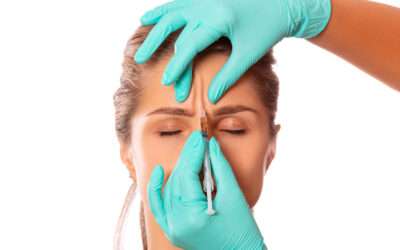The most widely utilized version of the medicine, botulinum toxin (Botox, made by Allergan), is a great and potent substance. The so-called “youth medication” may erase years from your looks, and when taken properly, you can still maintain a natural appearance. However, in certain nations, there are fewer restrictions on who may administer Botox, so you can end up with a negative Botox experience. What exactly is a negative Botox experience, and how can you prevent one?
Check out our website, Botox Las Vegas, if you’re thinking about getting a botox treatment.
If you receive too much or too little Botox, it is administered in the incorrect location, or your practitioner is dishonest and uses a different kind of Botulinum Toxin than one of the controlled versions (the three most common at the time of writing are Botox, Azzalure, and Xeomin).
If one of the following occurred after your Botox treatment, you can determine you had a negative experience:
– drooping of one eyelid, which indicates that your doctor could have injected the botox too near to the muscle that controls your eyelid. However, other variables, such as getting a facial or laying down after getting Botox, or engaging in severe activity right after getting Botox, might cause the substance to migrate into the muscles of the eyelids.
– both of one’s eyebrows dropping (feels like you are looking out under the peak of a baseball cap). It often indicates that your Botox practitioner did not adequately assess the muscles of your forehead and administered too little, too much, or a mix of the two.
– An expression that is absolutely frozen (unless, of course, you wanted it; some people adore this appearance! ), which may indicate that you had too much botox.
– One side of the face dropping. Most likely, the botox was administered too closely to the facial muscles.
– being unable to fully seal your mouth. Your lip muscles have likely received too much botox when trying to address the creases and lines on your top lip.
– hoarseness of voice or trouble swallowing. This is a potentially dangerous side effect that can follow neck Botox therapy. If you experience this, get medical help right away.
So how can you lessen the possibility of a negative botox experience?
The solution is to carefully select your Botox supplier. the following inquiries
1. What are their education, training, credentials, and experience?
They have to have received training from a certified Botox trainer. Ask them how many patients they treat on average each week; if it’s less than four or five, you should be worried. They should have extensive expertise administering Botox injections and have enough patients each week to maintain their abilities.
2. Inquire about the provider’s complication rate.
Anyone who receives frequent Botox will occasionally encounter difficulties. Since audit is one of the needs of medical appraisal, if they are a doctor in the UK, they should be aware. If they claim there are never any issues, they are either not seeing enough patients or they are lying, in which case you should think about switching providers.
3. Find out what they need in terms of ongoing monitoring and affirmation.
All physicians in the US are subject to stringent yearly assessment procedures where the quality of their work is examined by an outside expert as part of medical quality control (called in England as clinical governance).
4. Enquire about the Botulinum Toxin they utilize.
If administered at the proper dosage, all three of the major brands—Botox, Azzalure (Dysport), and Xeomin—perform equally well. However, one unit of Azzalure does not correspond to one unit of Xeomin or Botox. For every unit of Botox or Xeomin, about two and a half to three times as many Azzalure units must be utilized. Ask your healthcare practitioner how many units of Azzalure they use for their therapy if they do.
As a result, you can see that selecting a doctor who is completely licensed and registered to provide your Botox treatment has several benefits. It provides quality assurance in terms of knowledge, education, ongoing experience, and evaluation since they are necessary to keep one’s doctoral license active and to perform medical cosmetic procedures.



0 Comments